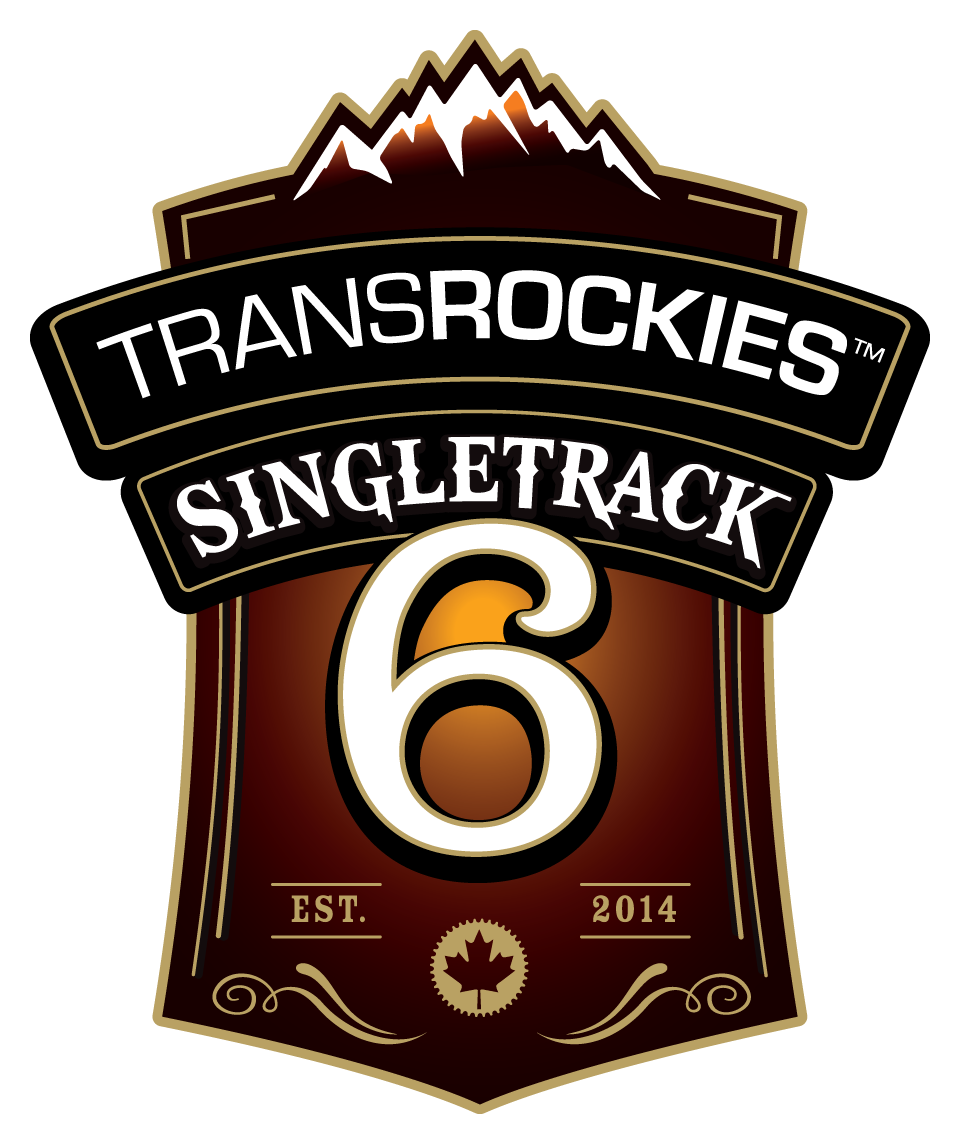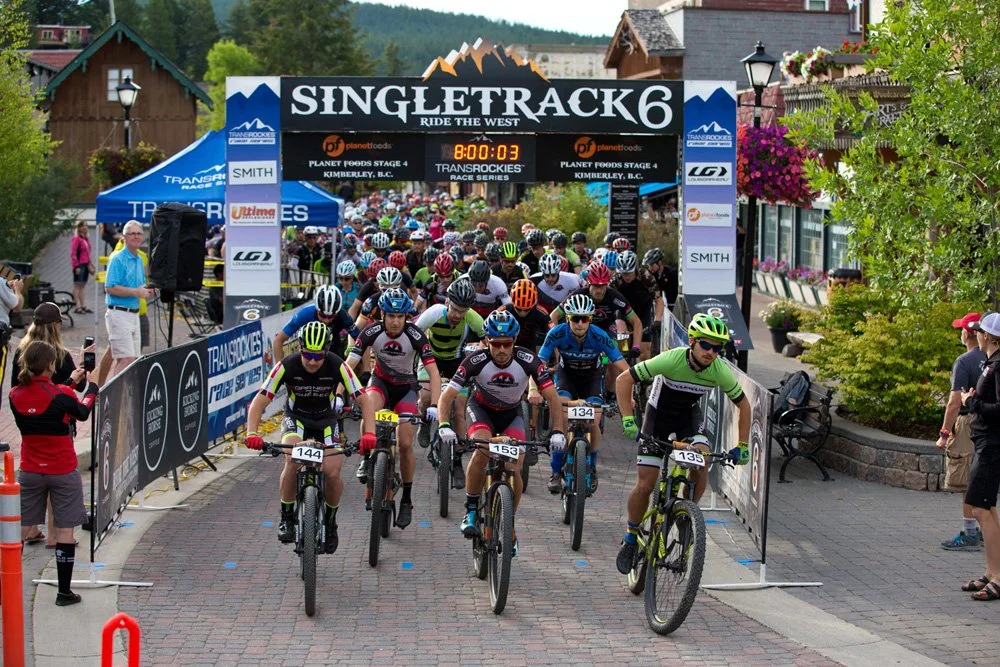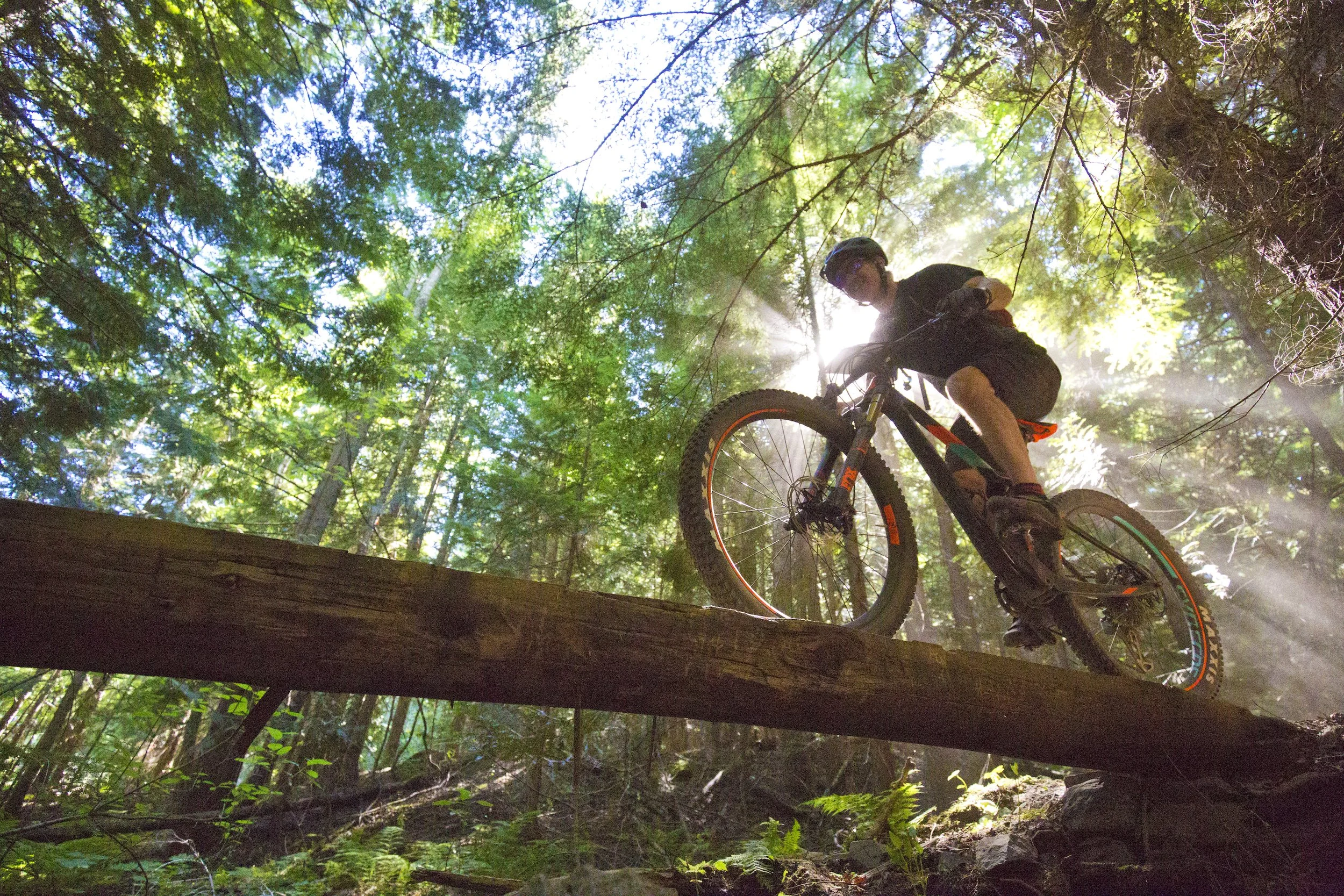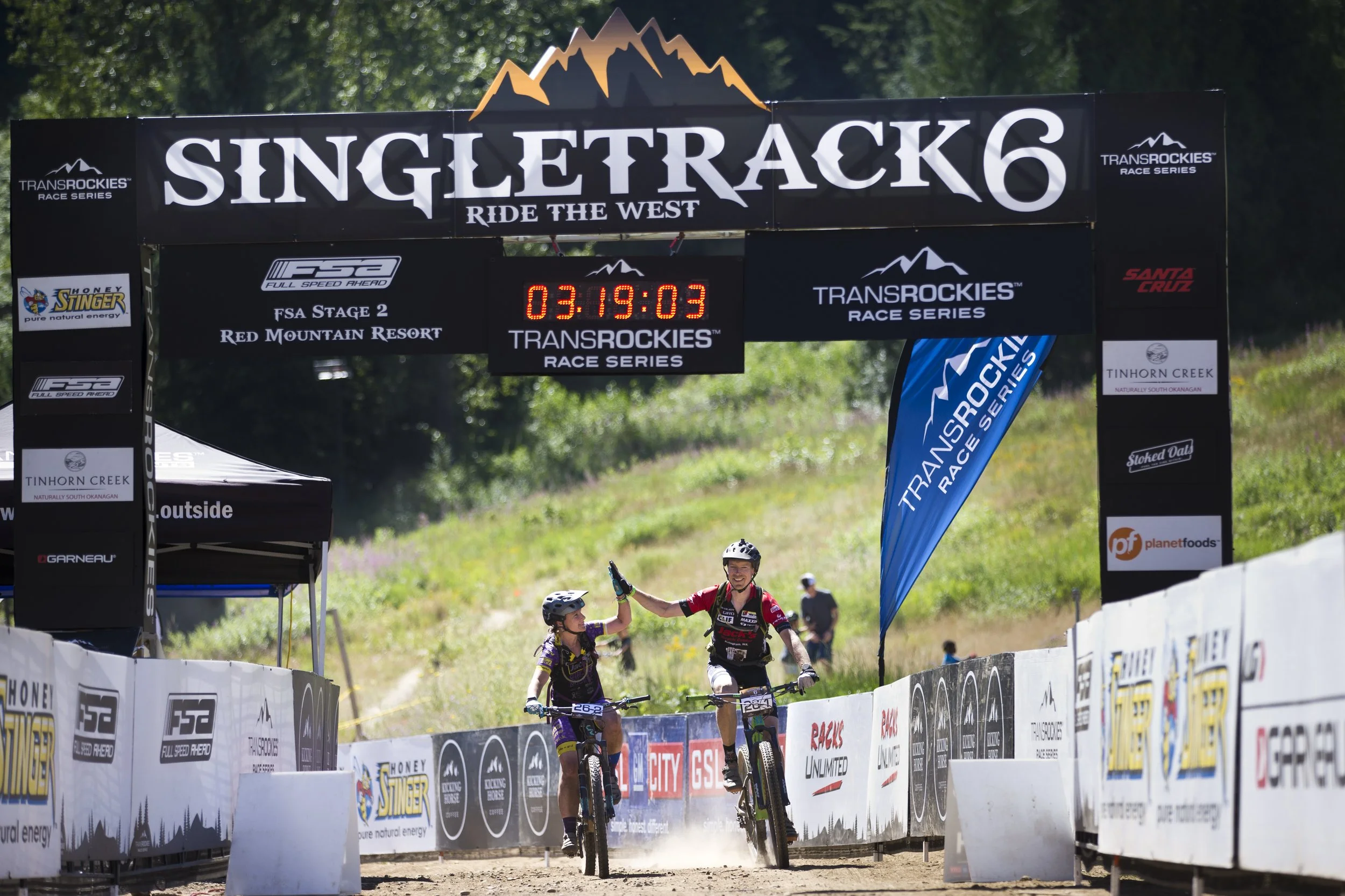20 Years of Riding the West: A Tale of Two Mountain Bike Races
Well, this is it! 2022 marks TransRockies’ 20th year in business. We’re getting older, maybe even maturing a bit. Over the years we’ve grown from one mountain bike event to nine events that now include mountain biking, road cycling, gravel cycling, running and off-road duathlon. We’ve been through a lot over the last two decades—including a global pandemic—and one race has been with us through it all.
Ok, it’s really two races, but the transformation of the TransRockies Challenge into Singletrack 6 is both a testament to the longevity of mountain biking and a bellwether for how the sport has changed—grown really—over the 20 years that we’ve been in business.
Even though it’s changed, the core of what has always made this a great event remains the same: adventure, community and a chance for people to push their limits with world-class riding. So we thought this would be the perfect time to take a look back on an event that has been the foundation of the TransRockies Race Series for more than two decades.
The Rocky Mountain (Bike) Way
Back in 2001, there were only a handful of mountain bike stage races in the world. La Ruta de Los Conquistadores and the TransAlp—both started in the 90s—were two of the more well-known events. In North America, nothing existed that even came close to their scale. But that all changed in 2002 when one of the creators of the TransAlp decided to bring mountain bike stage racing to the Canadian Rockies.
The new event would be seven days long and would be named the Transrockies Challenge. It would traverse the Canadian Rocky Mountains, and while many of the lessons learned from operating the TransAlps could be transferred over to the new event, the remote location would present many challenges of its own.
Aaron McConnell, president of TransRockies Inc., joined the team in 2004. But from the very beginning, he was connected with the organizers and well aware of those challenges.
“What they were trying to do was take the TransAlp concept and bring it to North America,” recalls Aaron, “But in TransAlp you could go town to town and there are always trails and roads connecting multiple options to all the communities. In the Rockies it’s a little bit different, there aren’t that many towns. So, they had to create the format around wilderness camping.”
Racing Into the Wilderness
The entire TransRockies Challenge race, including riders, would have to move from stage to stage through the remote backcountry. Things like tents, showers, catering and massage services all had to be arranged in remote locations. Organizers had to figure out what kind of vehicles would be best suited to the terrain, routes had to be planned and permits obtained. The tasks were daunting but this new race was an exciting prospect.
“It was something that was an interesting take on the sport, and if you look at the original Transrockies Challenge it was all point-to-point, camping based, crossing the continental divide,” says Aaron, “It was quite an impressive idea to be able to traverse the Rockies on your mountain bike.”
Most of the Transrockies Challenge took place deep in the backcountry. This made race logistics difficult, but there was no shortage of jaw-dropping views.
If You Build It, They Will Come
The difficulties facing the Transrockies Challenge weren’t only logistical. Mountain bike stage racing was a new sport in North America and when it first began, convincing people to commit to a race across the continental divide wasn’t easy. Very few people had ever done a race like this before.
“It wasn’t like you could talk to your buddy who did it two years ago and say oh, what do I need to know?” suggests Aaron, “People were kind of just learning that stuff on the fly.”
But after a couple of editions of the race, what began as a barrier to entry into these races soon became a major attraction for people looking for adventure.
“You have the whole wilderness aspect of it… which was quite interesting. People seemed to latch onto that idea quite strongly early on,” notes Aaron.
Adventure wasn’t the only attraction. Riders also wanted to test themselves physically and mentally, and at seven days long, and over 500km in length, the Transrockies Challenge was just the race to do that.
Riders were also attracted to this type of race by the camaraderie they develop and share, both on and off the bike. Riding and camping with the same racers for 7 days forges some special bonds that can last well beyond the end of the race.
“There’s just so much more to a stage race than a single day race because you really get to know people over the course of the event,” says Aaron.
Mountain Bike Stage Racing Takes Off
Add up all these ingredients: adventure, self-improvement, sense of community, and you have a recipe for success. And mountain bike stage racing became a great success. As racers became more familiar with this type of racing, it inched closer to the mainstream and people started flocking to stage races in droves.
“It became a pretty compelling idea over a few years, to the point where stage racing…became the hot thing in mountain biking,” remembers Aaron, “Before that…24-hour racing was the extreme end of XC or endurance, but it didn’t take long before stage racing took that position of being the exciting space in the sport.”
Mountain bike stage racing on North America caught on slowly at first but it quickly grew in popularity. Today there’s is no stopping it!
The Only Constant is Change
It wasn’t just stage racing that was booming in popularity, by the mid-2000s mountain biking, in general, was becoming more and more popular every year. New and better trails were being built all over North America. Mountain towns were rebranding themselves as mountain biking destinations to attract tourist dollars and they became riding hubs with bike shops, hotels and restaurants. Trail associations grew, and with increased membership and budgets, came more trails.
As people were exposed to more and better trail networks, their preferences started to change. They began to expect higher quality riding, and stage racing wasn’t immune to these changing attitudes.
This photo, taken during the first Transrockies Challenge in 2002, is an example of how toughness was essential for completing the race. If you look past the mud, it also shows how far mountain bike technology has come over the years.
“[The] Transrockies Challenge was really about toughness in a lot of ways and the epic journey,” says Aaron, “But some of the riding wasn’t always that awesome.”
The Transrockies Challenge route took racers through spectacular settings, but most of it was on forest service roads, not singletrack. It was difficult to link singletrack from point A to point B over such long distances and through such remote terrain. It still is. But the boom in trail building and the hospitality industry aimed at mountain bikers in western Canada—largely in British Columbia and parts of Alberta—had riders wanting more. This presented a host of new challenges, but it also opened up opportunities and we were more than willing to listen.
It’s What Riders Want!
We wanted to find out more, so we began talking to riders. These conversations were similar to focus groups, and what came out of them was the idea that riders were looking for something different.
“It wasn’t everyone, but a lot of people were talking about better riding and really showcasing the best riding,” says Aaron.
As luck would have it, there was more great riding available than ever before. So, we began trying to incorporate more singletrack into the Transrockies Challenge and holding stages closer to mountain biking communities.
Enter Singletrack 6—a Different Kind of Stage Race
In 2014, we came to the conclusion that incremental changes to the TransRockies Challenge wasn’t going to be enough. As a result, the event was rebuilt from the ground up and rebranded Singletrack 6. Along with the rebranding came changes to the entire race format. It would better integrate the multitude of new trail options and riding communities that had sprung up over the preceding years.
On top of changes to terrain, we shortened the length of the race from seven days to six and changed from a point-to-point route, to a series of loops. Each day would begin, and end, in or near a mountain biking community, allowing racers to absorb everything the area has to offer.
Over the six days, the race would visit several different communities, so that we would be able to incorporate as much singletrack as possible into each day of riding.
“There’s a lot of pride around those trail networks, so we thought it would be great to really showcase the quality of the riding in and around the communities, without the burden of having to try to link from community to community,” says Aaron.
One of the goals of Singletrack 6 is to showcase the amazing singletrack on offer in British Columbia and Alberta. Some of that singletrack is on display here in Rossland, BC. (John Gibson Pictures)
Racing Out of the Wilderness
Instead of wilderness camping, Singlerack 6 gives racers the option of either finding their own accommodation or choosing one of the hotel packages on offer. This means they’re able to eat at local restaurants, visit local attractions and get the most out of their stay in each community.
Each year, different mountain bike communities are chosen to be part of the route. We select communities based on, as Aaron puts it, “where there are great trail networks”. And then we put together a collection of host communities that makes sense from a travel standpoint.
Each year, Singletrack 6 organizers aim to showcase some of the best mountain bike communities Canada has to offer. This start in Kimberley, BC is a great example. (John Gibson Pictures)
Fun Replaces Suffering
In its current form, Singletrack 6 puts less of an emphasis on physical and mental endurance than the Transrockies Challenge did and places more on riding great singletrack. At roughly 30-40km in length, the stages are shorter, but that doesn’t necessarily mean they are easier. Singletrack 6 stages offer a different type of challenge: technical riding.
Unlike forest service roads, singletrack comes in a wide range of technical difficulties, and determining how difficult a stage will be is all about balance.
“Every year is going to be a little bit different from that perspective,” says Aaron, “But we try to find a balance and not make the whole event super challenging.”
Each community the race visits is different, but we try to make the stages accessible, challenging and fun for as many riders as possible.
While Singletrack 6 stages are fun, they are no walk in the park! Organizers try to make each stage accessible but also challenging. (Jean McAllister)
“First and foremost, we try to be authentic to what the riding is like in a community,” notes Aaron, “It’s not like XCO racing. We won’t be afraid to put in a black trail, for example, as long as it’s something you could ride on a XC bike. We won’t necessarily make all the courses rideable to everyone on a blue trail standard, but we’ll try to make them relatively accessible.”
This format has worked well for Singletrack 6 in the years after 2014, but there were still those who were nostalgic for the days of the Transrockies Challenge.
A Trip Down Memory Lane
In response to those who missed our original stage race, we decided to bring back the original Transrockies Challenge in 2019. It returned for a single season and we called it the Transrockies Classic.
“There were a lot of riders that said they miss the camaraderie feel of the camping format” recalls Aaron, “And some said that they missed the long days and remote mountain passes and that sort of thing as well.”
Again, riders asked and we listened. And by all accounts, the TransRockies Classic was a huge success.
“When we brought back the Classic, we saw people we hadn’t seen since the last time we did the Transrockies Challenge,” recalls Aaron, “The people that came were super-stoked on it. For some, depending on fitness level, it was one of the hardest things they’d ever done on a bike. But that’s what some people are looking for—to really challenge themselves.”
An Epic Journey with endless views - the 2019 TransRockies Classic (John Gibson Pictures)
Here Today, Gone Tomorrow
Even with the success of the Transrockies Classic, we still believe races like Singletrack 6 are what most riders are looking for.
“People call it ‘type-two fun’,” jokes Aaron when asked about the TransRockies Classic, “Singletrack 6 is maybe more type-one fun—super fun, in the moment kind of riding. You’re working hard to get up the climbs but there is a lot of really, really rewarding downhill singletrack.”
So, for the foreseeable future at least, it’s back to Singletrack 6! But we’re not ruling out a return of the Classic at some point in the future. And who can blame people for not wanting the Transrockies Challenge to fade away forever? It was, after all, the race that got stage racing off the ground in North America.
Some Things Never Change!
Whether you prefer the masochistic, type two fun of the Transrockies Classic or the exhilarating, type one fun of the Singletrack 6, both events share some core aspects that continue to attract people to stage racing: self-improvement, adventure and community.
Racers train hard for these events, improving their fitness and coming face to face with their physical and mental limits—often pushing through them to accomplish things they never thought possible.
And both races offer a brand of adventure you won’t find anywhere else. They foster a sense of community among racers, where each day is a new adventure. As soon as you finish one stage, you begin thinking about and planning for the next. Through it all, friendships become stronger and strangers become friends.
Here’s to the thousands of racers who have made the last 20 years so special, and here’s to another 20 years of doing what we love and loving what we do.








